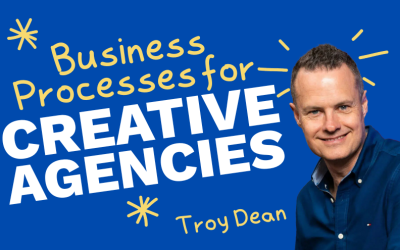Putting too much detail might get your team to do everything the same way. But without the freedom to move, your intelligent team members will get bored and eventually leave. On the other hand, put in too little detail, and you end up with fuzzy systems that don’t set a consistent standard.
So how do we know what level of detail to put in our systems?
It’s easier than you might think.
In this video, David Jenyns discusses how the 80% rule of systemisation gives leeway to your team members whilst maintaining a high standard. Watch the video to learn the 80% rule of business systemisation.
Timestamps:
0:09– Not all business systems are like McDonalds.
0:45 – Your business is not a hamburger joint, neither are your systems.
1:00 – If you are hiring A-players you need to create appropriate systems.
1:23 – Business Systems are an 80% solution, your team members bring the other 20%
2:04 – An example of the 80/20 business system in action
2:50 – Give your team room to think
3:25 – Over systemisation attracts poor team members
4:08 – Grab your copy of SYSTEMology
Transcription:
Hey, it’s David Jenyns, founder of SYSTEMology. In this video, I wanted to challenge your thinking around business systems. Quite oftentimes, people have this picture in their heads of what they think a business system is. And quite often I will blame McDonald’s for that thought that you have in your head because you might think that a systemized business looks like McDonald’s where they have every aspect of their business documented down to minute detail. And the reason they’ve done that, is quite often they might be recruiting a 15 year old kid off the street and they want to have them be productive and flipping burgers by the end of the weekend. And to do that, they’ve been very prescriptive on exactly what needs to be done. So the business owner sees that and they think, oh, that’s what a systemized business is. However, your business isn’t a hamburger business. There’s a good chance you’re not recruiting 15year old kids that have the unskilled and you need to quickly skill them up.
You might be hiring players who have great insight and thought and magic that they can bring into your business. And if you don’t give them the space for that, because the system is so prescriptive, you’re not going to give them the opportunity and you’re actually going to repel these A players. So there’s this fine line that you need to sort of juggle. And one of the ways that I present it to our team is that systems are actually an 80% solution. So we love to hire really smart team members. And I want to give them the latitude in the moment to be able to customise something depending on what the situation needs. So we talk about this idea that systems are an 80% solution. They need to bring the final 20%, which is the human, which is the tailoring, which is the customization to the moment. And they need to remember to add humans. They need to bring those magic moments for clients and prospects. So we might have a system that goes through step one, step two, step three, step four, and you need to email this to a client.
Now, imagine this email is only 80% of the way there. You, as one of our team members, will need to customise the final 20% to tailor it to that particular client to make sure that they feel like, wow, this is for me, this was designed for me. This email was written for me. I am not just a number or a cog in a machine. I am someone who someone has taken unique thoughts to and written this email template. Now, if we customise that 20%, even though it was worked off a template where 80% of it was already written, the person who receives that is going to feel like that it was 100% tailored. So really, business systems, they are shortcuts for team members to go, hey, here, we’ve got a way of doing things.
This is the process that we take and if you’re a brand new team member and you’re learning things for the first time, what a great way to learn, and then once they sort of start to learn that they understand there’ll be situations where a system might deviate or there’s an exception or the client has ordered a different color or something needs to change in this scenario and I don’t want to have them not bring the human and not think so. Another thing that made this really stand out for me. I remember reading an article with Reed Hastings, the founder of Netflix and he talked about when they first started systemizing the business.
They systemized everything because they wanted to make it dummy proof. The only problem is only dummies wanted to work there and they couldn’t attract intelligent players because of the way that the systems were structured. So you need to be really careful when you start to design your systems and your culture and give your team members and let them know. I want you to think this is part of it. Don’t underestimate the intelligence and what your team can bring to the table. If you’re looking for some more concepts like these, make sure you check out my book SYSTEMology and I’ll catch you in the next video.









